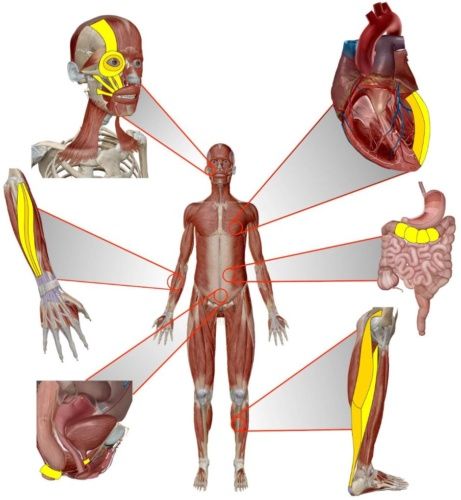By Ian Tsang, Third Year, Biology
When I first heard of emPOWER, the term ‘Cyberpunk’ immediately sprung to mind. emPOWER aims to accomplish what up to date, has only been possible in science fiction. I was fortunate enough to interview Prof. Jonathan Rossiter, a professor of Robotics at the University of Bristol leading this project.
emPOWER is a research project, funded by the UK Engineering and Physical Sciences Research Council. The goal of emPOWER is to develop artificial implantable muscles in humans to aid muscle ageing and disabilities by 2050. The project involves leaders in multiple scientific disciplines, including biomaterials and soft robotics.
‘As people age, they lose muscle mass and strength. This is known as Sarcopenia, which means they walk slower, are less mobile and ultimately, have to move into supported care’, said Rossiter. ‘We believe that with emPOWER, we can boost remaining muscle functions by 10 per cent, which can restore mobility and independence to patients suffering from Sarcopenia. Many other disorders caused by muscle dysfunction can also benefit from emPOWER, such as urinary and faecal incontinence or facial palsy.’

There have been significant advancements in muscle technology over the last decade, with synthetic muscles capable of similar power densities compared to human muscles. Artificial muscles are constructed from electro-active polymers, which are materials that adopt different shapes when stimulated by an electric field, making them ideal for artificial muscles.
We can boost remaining muscle function by 10 per cent
Compared to wearable exoskeletons (mechanically assisted body suits), artificial muscles do not cause damage to skin and discomfort to the wearer. ‘The muscles are interfaced with the skeleton under the skin, exactly where the natural muscles are located’, said Rossiter. ‘The ends of the muscles will fuse with the bone, allowing muscle forces to transfer to the skeleton with no loss or danger of damage. ’
When asked about how the muscles would be controlled, Rossiter explained, ‘We will explore how neural signals from the nervous system and the brain enable muscle control, via electrocorticography. We aim to develop an artificial motor neuron, which enables bidirectional control and sensing of emPOWER muscles.’

Could emPOWER be used to treat similar ailments in animals? Professor Rossiter certainly thinks so. Both animals and humans suffer from similar muscle ailments, thus application of emPOWER should work for animal treatment as well. However, government funding for the project would indicate prioritisation for the treatment of humans over animals. Using emPOWER to treat animal ailments is definitely within the realms of possibility, as long as humans are prioritised and receiving sufficient treatment.
Once implanted, are emPOWER muscles removable? It depends. ‘We do want the process to be reversible, but it depends on the situation. If a COVID-19 patient is recovering from muscle fatigue, emPOWER muscles could be implanted to aid regeneration and recovery of the patient’s muscles. Once the patient has recovered, the biodegradable emPOWER muscles can degrade into the body or be removed.’ By doing so, emPOWER muscles can aid rehabilitation as well as provide long term assistance, depending on the circumstance.
To what extent can humans ‘play god’ or control what is natural?
Ethical challenges are a major roadblock for any scientific breakthrough, with emPOWER being no exception. ‘We have a full time ethics team working in Essex,’ stated Rossiter. ‘They will be talking to industry leading experts as well as the general public, taking into consideration everyone’s opinions.’
As emPOWER muscles could strengthen people beyond the limits of normal muscles, the potential for people to turn themselves into a superhuman is imminent. Technological advances in emPOWER cannot continue until regulations and ethical protocols are in place, with the protocols ever evolving alongside technology.
When it comes to genes, less can be more
Bristol researcher given award to help pioneer protocellular materials
The goal is for emPOWER to be available worldwide, with the potential to improve and save the lives of millions. emPOWER could be particularly beneficial to countries with ageing populations, such as Japan, which as a result, suffer from a higher rate of Sarcopenia. The target of a 2050 release means plenty of technological advancements are still to come.
As Rossiter beautifully quoted, ‘We don’t currently have the answers, but we know how to find those answers.’
Featured Image: Unsplash / NICHD
How do you feel about the possibility of cyborg-like technology becoming a reality?









